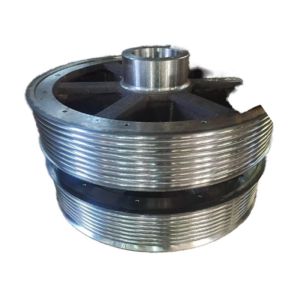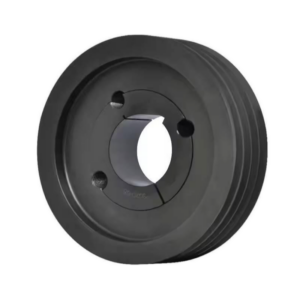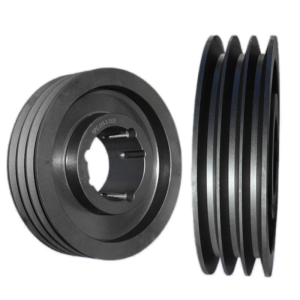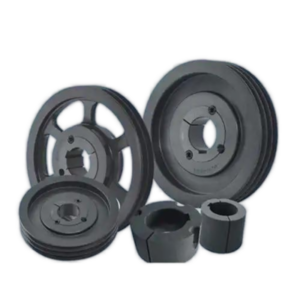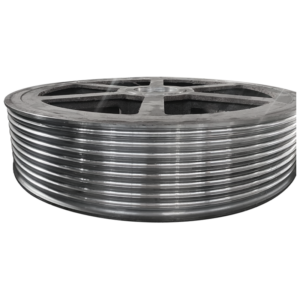In modern mechanical systems, pulleys and couplings play a vital role in transmitting power efficiently and ensuring smooth operation across a wide range of industrial applications. Although both are used for power transfer, they serve different yet complementary purposes.
1. Pulley: A Key Element of Belt Transmission
A pulley is a rotating wheel designed to transmit torque through a belt drive. It connects two shafts at a certain distance and enables the transfer of mechanical power by friction between the pulley and the belt.
Pulleys are widely used in machinery, compressors, conveyors, fans, and pumps, offering simple structure, smooth transmission, and low maintenance cost.
Common Pulley Features:
- Material: Cast iron, steel, or aluminum alloy
- Structure: Solid, spoke, or split type
- Surface treatment: Phosphating, painting, or powder coating
- Belt type: V-belt, flat belt, timing belt
Advantages:
- Easy installation and adjustment
- Ability to absorb vibration and overload
- Low noise and stable operation
2. Coupling: A Connector for Shafts
A coupling is a mechanical device used to connect two shafts together so that they rotate as one unit. It is primarily used to transmit torque, compensate for misalignment, and absorb shock loads between connected components.
Common Types of Couplings:
- Rigid coupling: Provides a solid connection for precisely aligned shafts
- Flexible coupling: Allows for small misalignments and reduces vibration
- Elastic coupling: Uses rubber or polyurethane elements for damping
- Chain and gear coupling: Designed for heavy-duty power transmission
Advantages:
- High torque transmission capacity
- Compensation for axial, radial, and angular misalignment
- Easy assembly and maintenance
3. Combined Application
In industrial machinery, pulleys and couplings often work together. The pulley transfers power from the motor to a driven machine through a belt, while the coupling connects the motor shaft to the transmission shaft, ensuring synchronized and stable rotation.
This combination guarantees efficiency, safety, and long service life for power transmission systems.
Conclusion
Both pulleys and couplings are indispensable components in mechanical power transmission. A well-designed system that combines these elements can significantly improve operational efficiency, reduce mechanical wear, and extend equipment lifespan.
At [Your Company Name], we provide a wide range of high-quality pulleys and couplings with precise machining, durable materials, and customizable specifications to meet various industrial needs.

